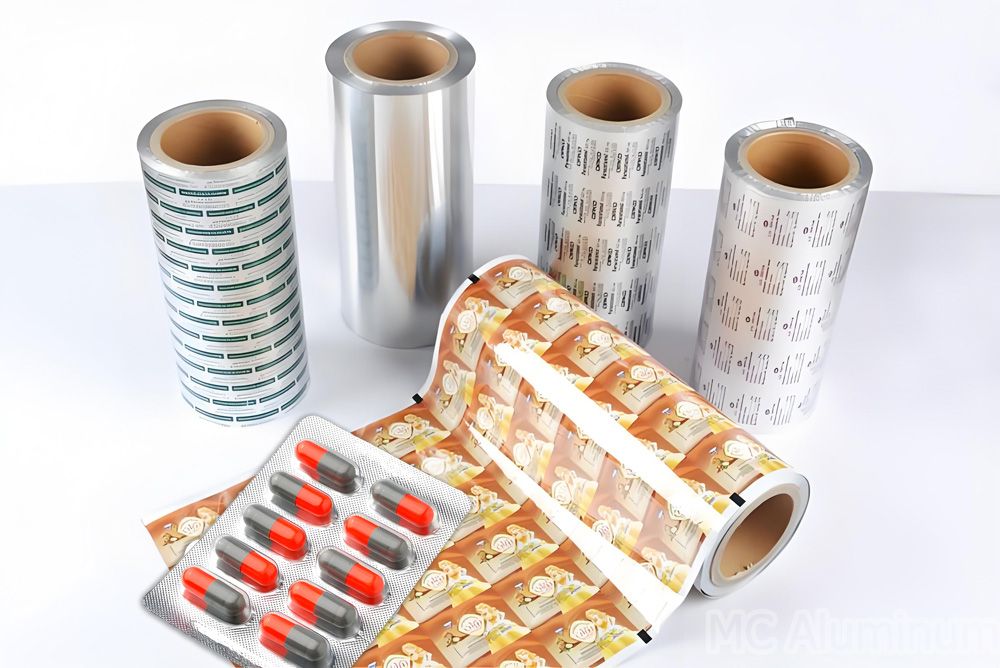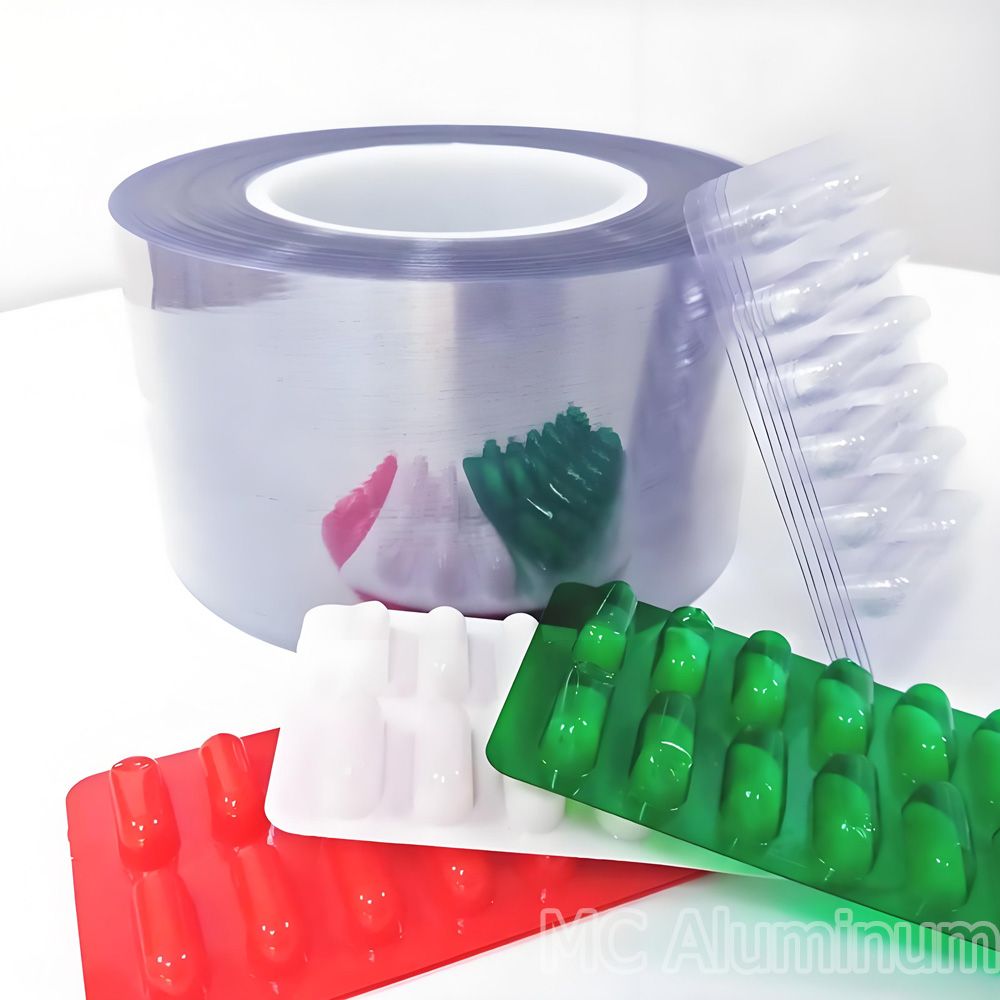In 1952, the introduction of aluminum foil blister packaging opened up a brand-new concept in pharmaceutical packaging. Blister packs have since become one of the primary packaging formats for pharmaceuticals, typically consisting of a lidding material and a blister base material. They are especially suitable for tablets, capsules, pills, and other solid dosage forms.
1. Structure of Blister Packaging
(1) Lidding Material
The lidding material is usually aluminum foil or laminated aluminum foil, which primarily serves as a seal and also functions as the inner label of the drug.
PTP aluminum foil is made by coating both sides of aluminum with ink, protective coating, and adhesive layers. This aluminum foil is designed to break easily under pressure. The typical thickness is 20-30 μm.
For specific functional requirements, paper or polyester film can be laminated on one side of the foil, with adhesive coating on the other side. This is known as pharmaceutical laminated aluminum foil.

(2) Blister Base Material
The blister base is typically made of polyvinyl chloride (PVC), polyethylene (PE), polypropylene (PP), or composite rigid films, forming the cavity structure of the blister pack. Each cavity provides an independent, sealed unit that isolates the contents from moisture and oxygen. This ensures that removing one tablet does not affect the integrity of the remaining tablets in the pack.
Additives such as color masterbatches or UV inhibitors can be added to PVC to block visible and ultraviolet light, providing child-resistant properties. Other commonly used materials include PP (polypropylene) and PET (polyester) rigid films.

2. Advantages of Aluminum Blister Packaging
1. Excellent Sealing & Barrier Properties: Effectively prevents moisture, oxygen, and contamination, extending shelf life.
2. Consumer Convenience: Individually sealed units make it easy to carry and administer.
3. Dosage Control & Traceability: Each cavity corresponds to a single dose, enabling precise dosage control and anti-counterfeiting measures.
4. Attractive Appearance & Printability: Rich information can be printed for branding and patient guidance.
5. High Production Efficiency: Ideal for automated, large-scale pharmaceutical packaging.
6. Tamper Evidence & Identification: Once opened, the package leaves visible marks, helping prevent tampering. The lidding foil can also display dosage instructions and product details.
3. Application Fields
Pharmaceutical blister packaging is widely used for solid dosage forms, including but not limited to:
Various tablets (vitamins, pain relievers, antibiotics, etc.)
Capsules (nutritional supplements, prescription medicines)
Lozenges, granules, orally disintegrating tablets (ODTs)
High-end imported pharmaceuticals requiring high barrier sealing
Veterinary drugs, nutraceuticals, and OTC health products
4. Diversified Blister Packaging Designs
(1) Child-Resistant (CR) Packaging
For certain oral prescription and OTC drugs, regulations require packaging that is difficult for children to open within a specified time.
Blister packs achieve CR functionality through peel-push formats or secondary cardboard packaging that embeds the blister sheet.
(2) Senior-Friendly Design
While ensuring child resistance, packaging must remain convenient for elderly users.
Non-CR packs or those with perforation/tear lines should be clearly designed for easy access.
(3) Adherence Packaging
Calendar packs print the day, date, or dosing schedule on the foil or outer carton to help patients follow medication schedules accurately-commonly used for contraceptives or drugs requiring strict adherence.
As an experienced pharmaceutical packaging manufacturer, MC Aluminum manufactures 8011 aluminum foil, ALU-ALU foil, PTP aluminum foil, blister foil, PVC rigid sheet, and PVC/PVDC composite rigid sheet, all suitable for pharmaceutical blister packaging. With stable product quality, factory direct sales, and short delivery times, MC Aluminum exports to numerous countries and regions, ensuring customers can place orders with confidence.
